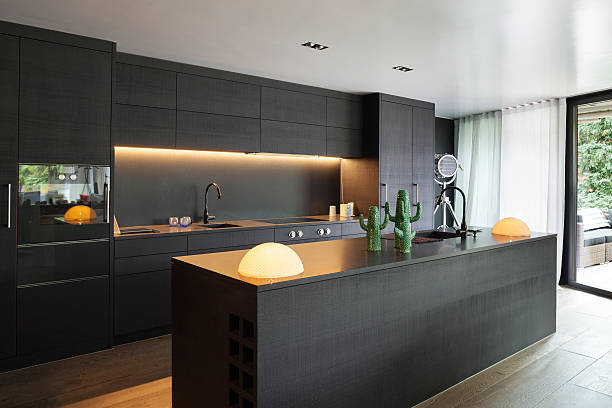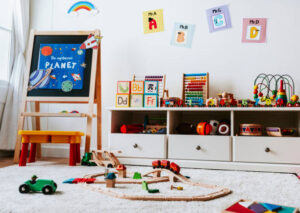The kitchen is where the action happens. From breakfasts that are rushed before heading out the door, family meals, or drinking tea with your loved ones, The kitchen is the hub of activity in your house. Therefore, it must perform well and also look nice. When cooking, cleaning, eating, or hosting, your kitchen should be an area you love; a thoughtful kitchen design can achieve that.
If you’re thinking of a kitchen remodel or creating a modern kitchen space, our design tips can help you design the perfect space you will love. Take our suggestions on making your kitchen layout using ideas to plan, organize, and essential features to create a stunning kitchen that meets every need.
Reduce the number of steps that are wasted. When you are planning the layout of your kitchen, consider the most frequently used tasks. It will save you time and energy by combining the items you require to complete tasks. For instance, you can keep the coffee mugs, grounds, and other essentials for brewing coffee close to the coffee maker. Your sleepy self will thank you.
Also, keep wrapped items and plastic storage containers at a proper spot near the work area to wrap leftovers. Place flatware and dishware near and in the dishwasher to facilitate loading.
Plan large paths
Make sure the floor plan of your kitchen has enough space between cabinets and the kitchen island for you to move around the kitchen effortlessly. Generally, kitchen pathways should be at least 36 inches long. The cooking area’s aisles are 42 inches wide for a kitchen with a single cook and 48 inches for a double-cook arrangement. If you are planning your kitchen, alter the peninsulas and islands accordingly.
The kitchen is the main entry point for traffic
The traffic flow is essential in deciding on the kitchen that will work for you. It will not work if the cook constantly bumps into other people moving and coming. If traffic flows from one kitchen area to another, ensure that the cooktop and cooktop aren’t placed on the main road.
The central Kitchen island can be a suitable method of separating the working space in the kitchen and the more social area in your kitchen. It allows family and friends to stay near enough to chat with the cook and prevents them from blocking the kitchen.
Avoid corners
A crucial kitchen design tip is to know angles when deciding where to place cabinets and appliances. Create space for the doors of your cabinet space and the direction of the swing in the kitchen layout to make your doors for appliances and cabinets functional. Be sure to keep devices out of corners, and ensure that doors aren’t crashing into each otensurethey open simultaneously.
If you’re in a tight corner, wosimultaneouslyuld consider using low-profile handles. Knobs, pulls, and appliance handles that stick out could cause opening doorways to the corner of your cabinet tricky.
Find the ideal size for your microwave
The proper height and placement for the appropriate location and size for the microwave will depend on the chef’s preference or the child-friendly style in the kitchen. For adults, 15 inches above the countertop is the ideal microwave height. However, it is possible that an above-countertop set-up could be more secure and better suited for kids who make use of the microwave.
Find out the purpose of the island
When it comes to kitchen islands, Form follows function. Consider how you’d like to use your islands within the space before deciding the best way to lay out your kitchen. If you plan to prepare food and dine on the kitchen island, ensure you have enough space that your cooktop is safe away from your dining space. An island can be used to house other appliances like dishwashers and sinks for additional functionality.
Plan landing space near appliances
Space around appliances that can be used for landing provides an area to place hot foods from the microwave or oven. It’s also beneficial for making the ingredients. When deciding on your kitchen layout, make sure you have at least fifteen inches of countertop on each side of the cooktop and the refrigerator. It is also essential to have space near other small appliances, for example, a coffee maker and a toaster.
Think about the counters
Consider your needs when it comes to meal preparation to help you make countertop options. For instance, chefs who cook a lot need more space on the counter (ideally between the stove and sink) compared to those who cook less often or cook simple meals. In addition, having two counter sizes makes baking simpler and helps children get involved in meal preparation.
Install an empty pot
Are you tired of carrying water-filled pots from the sink to the stove? A swing-out faucet, also known as a pot-filler or pot-filler, located near the cooktop, fills pots close to the point where you heat the cooktop. Or, you can connect an extra-long hose to the principal tap to fill up jars on your cooktop.
Be careful when you store knives
Then, hang the knives on an adhesive strip glued onto your counter’s back. It should be placed over the countertop you usually prepare your ingredients. This will make it easier to find the proper knife for a task and ensure that dangerous items are away from the reach of children.
Recycling can be made simple
Create areas for garbage and recyclables to make recycling as simple as possible. Set up a cabinet with distinct plastic, glass, and metal containers. A drawer in the spare could be used to store newspaper remnants and other materials for recycling.
Sort items in the reach of
In organizing the pantry and other storage areas for food, Note what you intend to keep in your pantry. Measure the size of storage containers for often-used items. You can then have shelves for your pantry that are at the correct height, and you’ll know that everything will fit inside the pantry. When planning the kitchen layout, you’ll decide if smaller appliances will be positioned within the kitchen pantry. If yes, make sure to make space to store these items.
Include the message center
Create a center for messages that is easily accessible location, like near the refrigerator. Set up a bulletin board chalkboard or whiteboard placed on the wall as an area to write down notes or grocery lists. Keep a notebook, calendar, and writing tools in a drawer nearby or wall-mounted bins.


